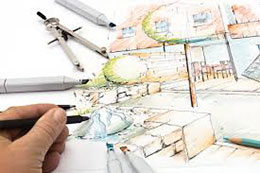
Models & drawings
Model rights
Drawing and model rights are intended to protect drawings and models. This type of right is less familiar than copyright and patents. It is an effective weapon against counterfeiting and imitation.
Drawings or models
A drawing or model is the new appearance of a consumer item. This appearance is determined by aspects such as the colour, shape or materials of the product. The drawing right protects the two-dimensional pattern or the drawing of items such as textiles, wallpaper or tiles. Model rights protect three-dimensional objects.
Registration
Registering your model makes it possible for you to take measures against infringements. You can protect a model if it is new and has an individual character.
Advantages
Drawing and model rights protect the appearance of a product or part of a product. This right is said to have been infringed if the model of a third party cannot be distinguished from yours in the eyes of the general public.
Conditions
Your product is eligible for protection provided that it is new and has an individual character. If you have had the shape of your product registered as a model, you can prohibit third parties from making, offering or trading in the same or a very similar model.
Register promptly!
It is also advisable to register your model before you start to commercially exploit the product or place it on the market. In many countries model rights can only be obtained if the model has never been made available to the public anywhere in the world. Register and protect your model before you present it to the world!
Benelux
Drawings and models are protected in the Benelux by the Benelux Convention on Intellectual Property (BCIP). Since 2003 it has been possible to obtain model protection throughout the European Union.
International
International models are deposited via the World Intellectual Property Organization (WIPO). You can apply for protection in all member countries, but you can also opt for some of these countries.
Not everything is protected
Objects needed to obtain a technical effect are not covered by the drawing or model rights. These objects are generally deemed to be inventions, for which the inventor can apply for a patent. Examples include the spiral shape of a corkscrew, which cannot be protected: it is needed to pull the cork out of the bottle.
Exclusions
Certain outward appearances of productions are excluded from protection under drawing and model rights. To give some examples:
- The outward appearance of a creation dictated solely by its technical function. The lines and patterns on the handle of an electric razor can be protected as drawings or models, for instance. But this protection is not available for the form of the blades and the angle in which they are placed; the blades fulfil a technical function of the product: the precise shaving result. This part of the razor could however be the subject of a patent.
- The outward characteristics of parts of the product which are not visible during normal use of the product, such as the appearance of screws or bolts in the inner workings of a product or mechanism.
- A drawing or model in violation of public order or decency, such as the swastika.
